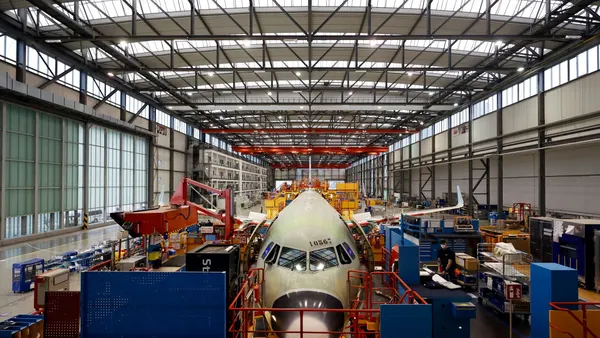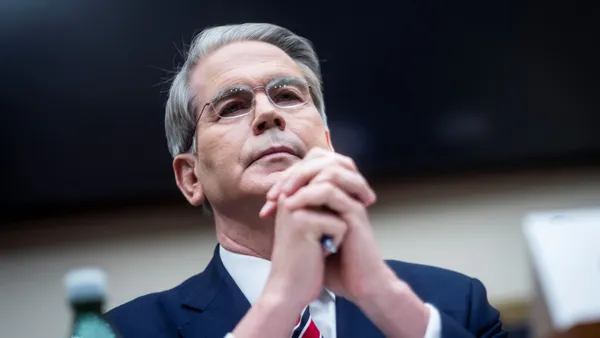Trade shifts, or rumors thereof, having been plentiful during Trump's first 100 days. The Trans-Pacific Partnership? Not happening. NAFTA? He wants to renegotiate. Adding a border adjustment tax on goods coming into the U.S.? It’s now on the table. All of this trade talk and uncertainty has U.S. industries worrying about how these plans will affect their business.
While each president has an agenda, the Trump government is different than past Republican and Democratic administrations, as the direction is difficult to predict and the messaging is sometimes contradictory, says Johan Gott, a principal at strategy and management consultant at A.T. Kearney.
Since Trump entered office, clients have been asking Gott and his colleagues what they should do about potential trade issues. Businesses don’t know what will happen with trade, and the possible scenarios can be highly disruptive. As a result, Gott and A.T. Kearney developed the Trade Wargaming initiative as a model for future action.
5 new trade scenarios for shippers to consider
Gott and his colleagues used Trump’s speeches, pronouncements and tweets to determine possible government actions, and then consulted trade specialists in Washington, D.C. to gain a wider perspective.
They came up with five distinct, possible trade scenarios to determine what the various branches of government might do and the likelihood, as well as the amount of maneuvering space the administration has for each. Then they looked back historically at what’s happened with trade in the last century, including how trade issues were addressed and consequences. The five likely actions include:
-
Keep current treaties and deals, but increase enforcement
This would not require any additional legislation, and the administration would work within the existing framework. President Obama’s enforcement of 23 World Trade Organization (WTO) cases is the precedent. This situation also includes the president creating symbolic ad hoc deals to create U.S. jobs.
-
Renegotiate treaties bilaterally
As we’re now seeing with President Trump’s recent NAFTA proclamations about trading with Canada and Mexico, this scenario envisions bilateral negotiations with trading partners through existing treaties. Negotiations with China and other countries could follow. President Reagan’s voluntary export restraints on Japanese cars is cited as a precedent.
-
A border-adjusted tax
Leaving trading partners out of negotiations, this scenario show the U.S. layering a tax on items imported into the country. President Trump recently slapped on an import tax for Canadian soft wood entering the U.S., in response to Canada taxing some milk products entering from the United States.
-
Brinksmanship
Using aggressive tactics unilaterally can lead to trade conflicts, best exemplified by President Nixon’s 1971 declaration that the U.S. would no longer allow dollars to be traded for gold. Under this scenario, the U.S. imposes tariffs which affect specific industries, with the idea of increasing leverage.
-
Trade war
The most volatile scenario is the last one, where the global trading system breaks down completely. This happened after the 1930 Smoot-Hawley Tariff Act, when the U.S. greatly increased tariffs on 20,000 imported items, resulting in global trade falling by 66%.
Determining a level of engagement
Companies delving into these scenarios want to determine how each might affect them, to decide what they can and should do now, and to prepare for the future.
The first step is to delve into the five scenarios, determining how each impacts their business in general. Not all companies will face the same problems from trade shifts. Retail importers must evaluate it from a different perspective than those importing raw materials, for example.
A.T. Kearney's data helps Gott and his colleagues run through the risk assessment tools to predict the effects of these trade initiatives on a company. The company’s purchasing and sales data is applied to metrics for each scenario, determining the economic impact for each option.
Running the numbers provides a clearer assessment of the risk level. Since many companies have thin margins, changing the cost of goods can greatly impact the bottom line. Clients can then reduce uncertainty, as the results provide a framework for sorting and structuring the information pouring in from the news channels.
“Once you understand the source countries, the volume source, the amounts paid and the current duties, you can convert to additional economic impacts for the scenario. That way companies can understand the values at risk,” Gott says.
Nobody says this isn’t of interest. The question is when is the right time to act.

Johan Gott
Principal, A.T. Kearney
The “wargaming” step is a fancy name for contingency planning. “We don’t recommend that companies take actions yet, as the uncertainly is too high. But we do recommend that the companies prepare themselves to understand the levers and options under the different scenarios, so they can quickly act.”
In preparing for various trade scenarios, shippers discuss alternative supply locations, tariffs and the potential for retaliatory actions from other countries with A.T. Kearney's team. That might include the impact on immigration policy for recruiting and for offshoring talent.
Shippers might want to simulate the various decisions and models, to put itself in a good position to decide on an action plan, if and when a government trade policy change is made. For example, if the administration is adjusting border taxes, and the company knows that certain tariff levels must be in place for three years for their plan change to be viable (e.g. switch manufacturing countries if the exchange rate is favorable) they’ll be in position to make a quick change.
Is this right time to act?
Not all companies are thinking through the trade issues at this time. Some are using a wait-and-see approach. But companies in the apparel, chemical, consumer electronics and even a Mexican conglomerate have all approached A.T. Kearney for input on how to best navigate the new landscape, according to Gott.
For those who want a framework to understand how the trade changes can affect their company, running through the scenarios with their in-house staff or with outside consultants may be helpful. A.T. Kearney says their process takes about eight weeks to run through various high-impact scenarios and understand variables and alternatives.
“Nobody says this isn’t of interest,” Gott says. “The question is when is the right time to act. A lot of companies are needing to know how impactful this is, what’s at stake for them, what are the worst case scenarios, what are their options.”












